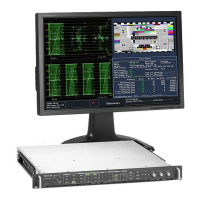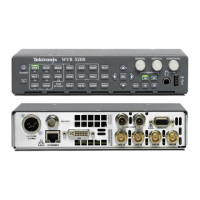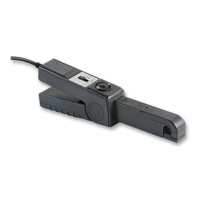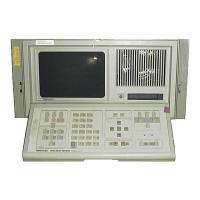Theory of Oper ation
Power Distribu
tion is not shown in the block diagram but is covered at the end of
this section.
Serial Digital Input
The serial digital signal inputs are passive loop-throughs, so they m ust be
terminated to operate properly. Each input is applied to a cable equalizer and then
to a serial-to-parallel conversion circuit. The output of these sections are parallel
data and a word clock.
Composite
Input
The Composite inputs a re also passive loop-throughs. If unterminated, the
signal appears twice as large as it should. The two sets of inputs go through a
2-to-1 m
ultiplexer; then the selected signal is clamped if selected by the user.
After the clamp, the signal is filtered and then applied to an A-to-D converter
to generate a 12-bit parallel signal. There is also a sync separator to generate
timing information and a picture decoder. The output of the picture decoder is
very similar to the parallel data from the serial digital input. The separated sync
passes on to the waveform processing (WFM) FPGAs, where it processed in
the di
gital domain.
Reference Input
The R
eference input is a passive loopthrough similar to that o f the Composite
inputs. The buffered signal is clamped and then digitized to generate a 10-bit
stream. A simple sync separator ge nerates timing information, which is sent to
the wa ve form processing FPGAs. As on the composite inputs, the separated
sync from the reference p asses on to the WFM FPGAs, where it is processed
in the digital domain.
Digital Waveform Processing Engine
The parallel data streams from a ll three video inputs are applied to the waveform
p
rocessing FPGA . This block up-samples, interpolates, demodulates and
otherwise processes the data to generate the signals needs to c reate the displays.
2–2 WVR6020, WVR7020, and WVR7120 Waveform Rasterizers Service Manual

